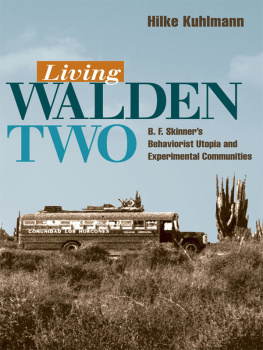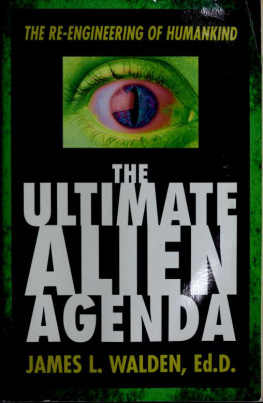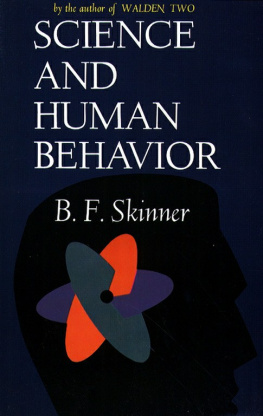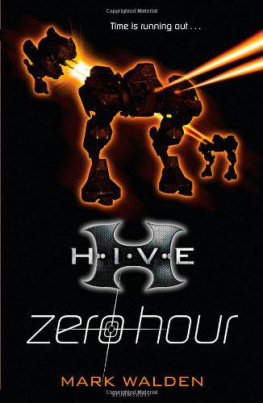

To W. A. S. and G. B. S.
Copyright 1948, 1976 by B.F. Skinner
Reprinted 2005, Hackett Publishing Company, Inc.
All rights reserved
Printed in tllc United States of America
12 11 10 09 08 2 3 4 5 6 7 8
For permissions and other inquires, please address:
Hackett Publishing Company, Inc.
P. O. Box 44937
Indianapolis, IN 46244-0937
Library of Congress Cataloging-in-Publication Data
Skinner, Burrhus Frederic, (date)
Walden Two.
I. Title
PZ3.S62825Wa5 [PS3537.K527] 813.54 41339
ISBN 0-87220-779-X
ISBN 0-87220-778-1 pbk.
ISBN-13: 978-0-87220-779-0 (cloth)
ISBN-13: 978-0-87220-778-3 (pbk.)
PRC ISBN: 978-1-60384-110-8
Contents
T HE EARLY summer of 1945, when I wrote Walden Two, was not a bad time for Western Civilization. Hitler was dead, and one of the most barbaric regimes in history was coming to an end. The Depression of the thirties had been forgotten. Communism was no longer a threat, for Russia was a trusted ally. It would be another month or two before Hiroshima would be the testing ground for a horrible new weapon. A few cities had a touch of smog but no one worried about the environment as a whole. There were wartime shortages, but industry would soon turn again to devoting unlimited resources to the fulfillment of unlimited desires. The industrial revolution was said to have stilled the voice of Thomas Robert Malthus.
The dissatisfactions which led me to write Walden Two were personal. I had seen my wife and her friends struggling to save themselves from domesticity, wincing as they printed housewife in those blanks asking for occupation. Our older daughter had just finished first grade, and there is nothing like a first childs first year in school to turn ones thoughts to education. We were soon to leave Minnesota and move to Indiana and I had been in search of housing. I would be leaving a group of talented young string players who had put up with my inadequacies at the piano and I was not sure I could ever replace them. I had just finished a productive year on a Guggenheim Fellowship, but I had accepted the chairmanship of a department at Indiana and was not sure when I would again have time for science or scholarship. Was there not something to be done about problems of that sort? Was there not by any chance something a science of behavior could do?
It was probably a good thing that these were small provincial problems, because I might not have had the courage to tackle bigger ones. In Behavior of Organisms, published seven years earlier, I had refused to apply my results outside the laboratory. Let him extrapolate who will, I had said. But, of course, I had speculated about the technology that a science of behavior implied and about the differences it could make. I had recently been taking the implications seriously because I had been meeting once a month with a group of philosophers and critics (among them Herbert Feigl, Alburey Castell, and Robert Penn Warren) where the control of human behavior had emerged as a central topic.
That all this should come together in a novel about a Utopian community was probably due to the fact that a colleague, Alice F. Tyler, had sent me a copy of her new book, Freedoms Ferment, a study of perfectionist movements in America in the nineteenth century. With two months to spare before moving to Indiana, I decided to write an account of how I thought a group of, say, a thousand people might have solved the problems of their daily lives with the help of behavioral engineering.
Two publishers turned Walden Two down, and Macmillan published it only on condition that I write an introductory text for them. These editorial judgments were, at the time, quite correct. One or two distinguished critics took the book seriously, but the public left it alone for a dozen years. Then it began to sell, and the annual sales rose steadily on a compound interest curve.
There were, I think, two reasons for the awakened interest. The behavioral engineering I had so frequently mentioned in the book was, at the time, little more than science fiction. I had thought that an experimental analysis of behavior could be applied to practical problems, but I had not proved it. The 1950s, however, saw the beginnings of what the public has come to know as behavior modification. There were early experiments on psychotic and retarded persons, and then on teaching machines and programmed instruction, and some of the settings in which these experiments were conducted were in essence communities. And in the sixties applications to other fields, such as counseling and the design of incentive systems, came even closer to what I had described in Walden Two. A technology of behavior was no longer a figment of the imagination. Indeed, to many people it was altogether too real.
But there was, I think, a better reason why more and more people began to read the book. The world was beginning to face problems of an entirely new order of magnitudethe exhaustion of resources, the pollution of the environment, overpopulation, and the possibility of a nuclear holocaust, to mention only four. Physical and biological technologies could, of course, help. We could find new sources of energy and make better use of those we had. The world could feed itself by growing more nutritious grains and eating grain rather than meat. More reliable methods of contraception could keep the population within bounds. Impregnable defenses could make a nuclear war impossible. But that would happen only if human behavior changed, and how it could be changed was still an unanswered question. How were people to be induced to use new forms of energy, to eat grain rather than meat, and to limit the size of their families; and how were atomic stockpiles to be kept out of the hands of desperate leaders?
From time to time policy makers in high places have been urged to pay more attention to the behavioral sciences. The National Research Council, the operative arm of the National Academy of Sciences, made one such proposal a number of years ago, pointing out that useful insights in policy formulation had been developed. But it implied that the chief role of the behavioral sciences was to collect facts and insisted, possibly to reassure policy makers who might be alarmed by the ambitions of scientists, that knowledge is no substitute for wisdom or common sense in making decisions. Science would get the facts but Congress or the President would make the decisionswith wisdom and common sense.
It is true that when the behavioral sciences have gone beyond the collection of facts to recommend courses of action and have done so by predicting consequences, they have not been too helpful. Not all economists agree, for example, on how an increase or reduction in taxes or a change in interest rates will affect business, prices, or unemployment, and political scientists are no more likely to agree on the consequences of domestic or international policies. In anthropology, sociology, and psychology the preferred formulations are those that do not dictate action. A thoroughgoing developmentalism, for example, almost denies the possibility of effective action. Applied psychology is usually a mixture of science and common sense, and Freud regarded therapy as a minor contribution of psychoanalysis.
From the very beginning the application of an experimental analysis of behavior was different. It was doubly concerned with consequences. Behavior could be changed by changing its consequencesthat was operant conditioningbut it could be changed because other kinds of consequences would then follow. Psychotic and retarded persons would lead better lives, time and energy of teachers and students would be saved, homes would be pleasanter social environments, people would work more effectively while enjoying what they were doing, and so on.
Next page















